Abstract
The seasonal variation in prevalence of Aedes (Stegomyia) mosquitos breeding in peridomestic water containers was assessed in an urban quarter of Enugu, Nigeria, and in two rural villages located among forest relicts in the neighbouring Udi Hills. A large number of earthenware pots, most of which contained water in the wet season, were present in the compounds around houses. Monthly determinations of the presence or absence of Aedes larvae in these containers were made for 13 consecutive months. The average Breteau index (positive containers per 100 houses) for A. aegypti during the 7-month wet season was 53 in one of the villages and 76 in the other, suggesting a high risk of yellow fever transmission; the dry-season averages were 11 and 23. In the urban quarter the wet-season average was 29; the dry-season average was 4.7, a level at which transmission is unlikely to occur. A. luteocephalus were occasionally found in containers in both the urban and rural localities, and A. africanus larvae occurred in one of the villages. Although Culex larvae were common, mixed infestations of Aedes and Culex were so uncommon that the simplified ”single larva” method of sampling for Aedes gave similar results to the conventional method. The multiplicity of peridomestic containers in this part of Nigeria made the container index inadequate as a measure of larval density.
Full text
PDF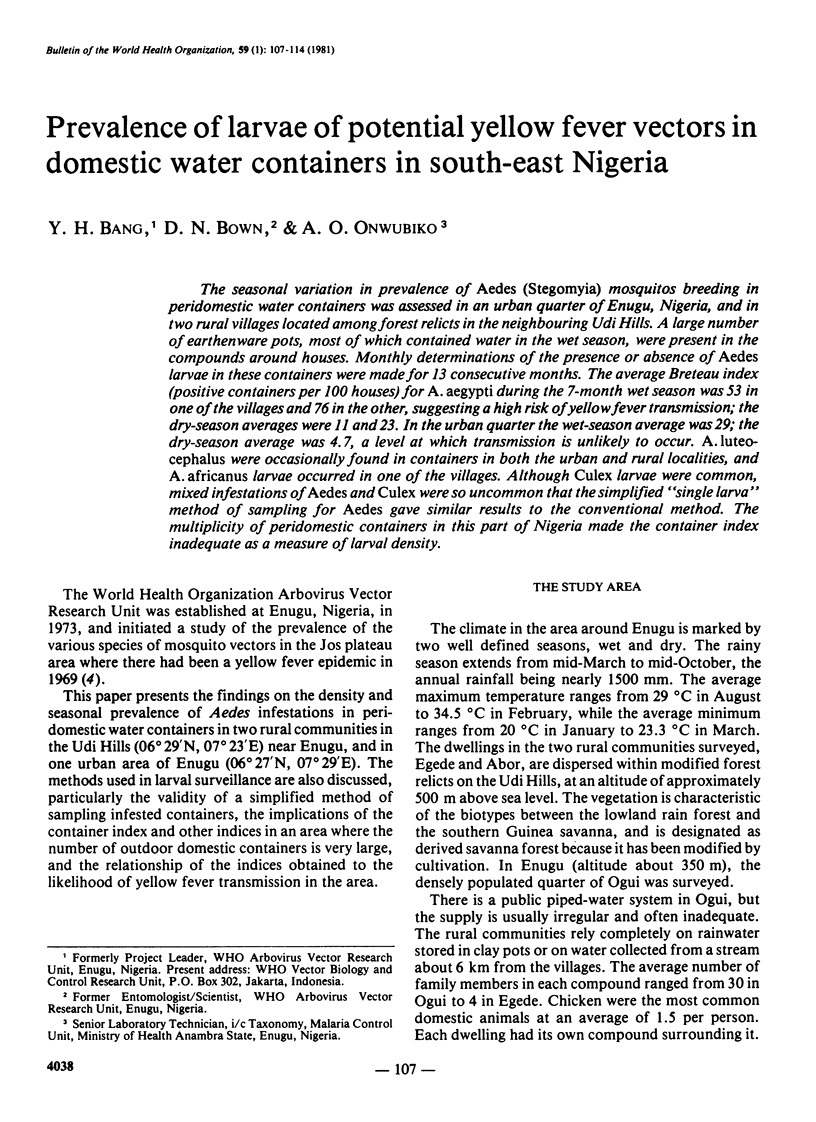
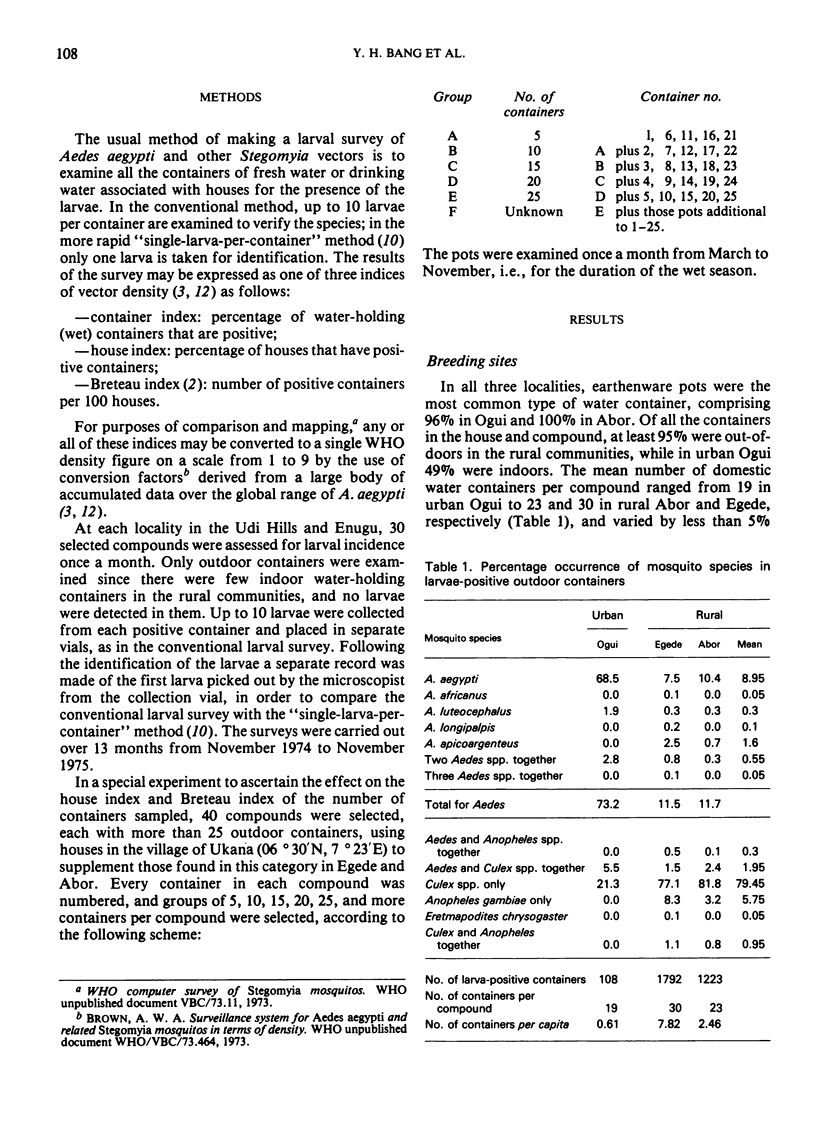
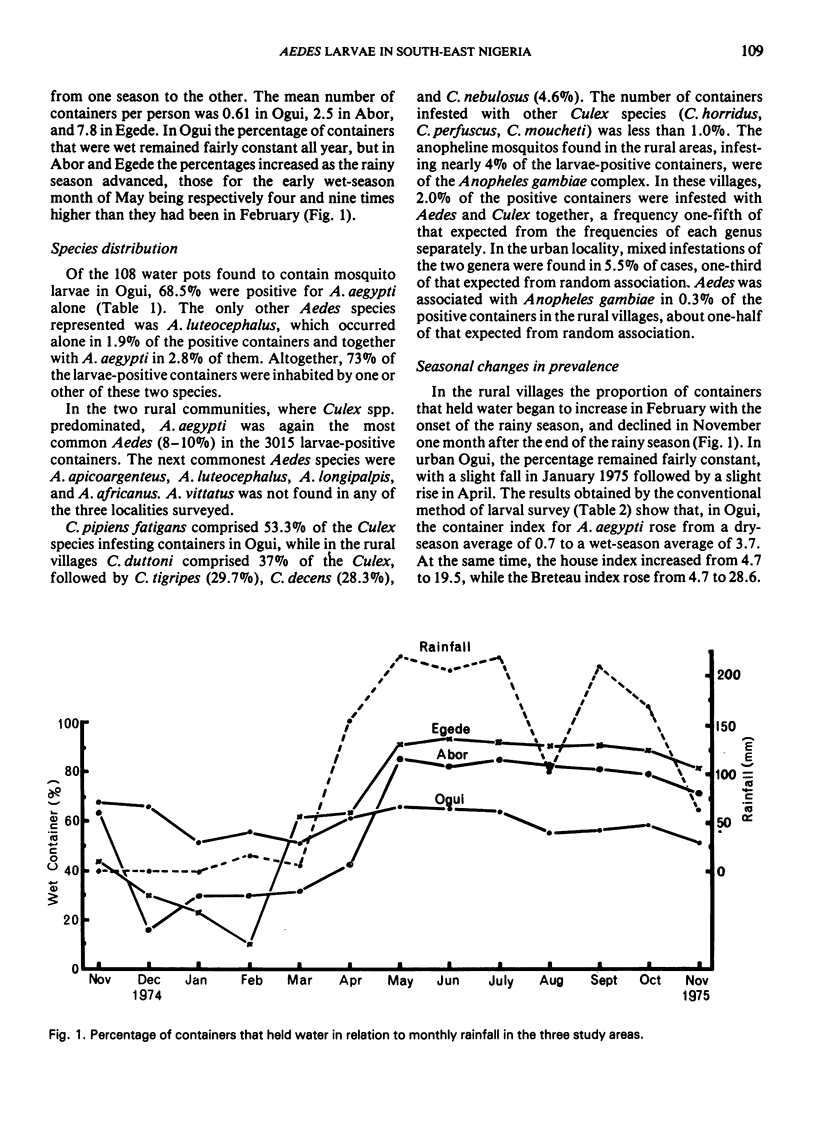
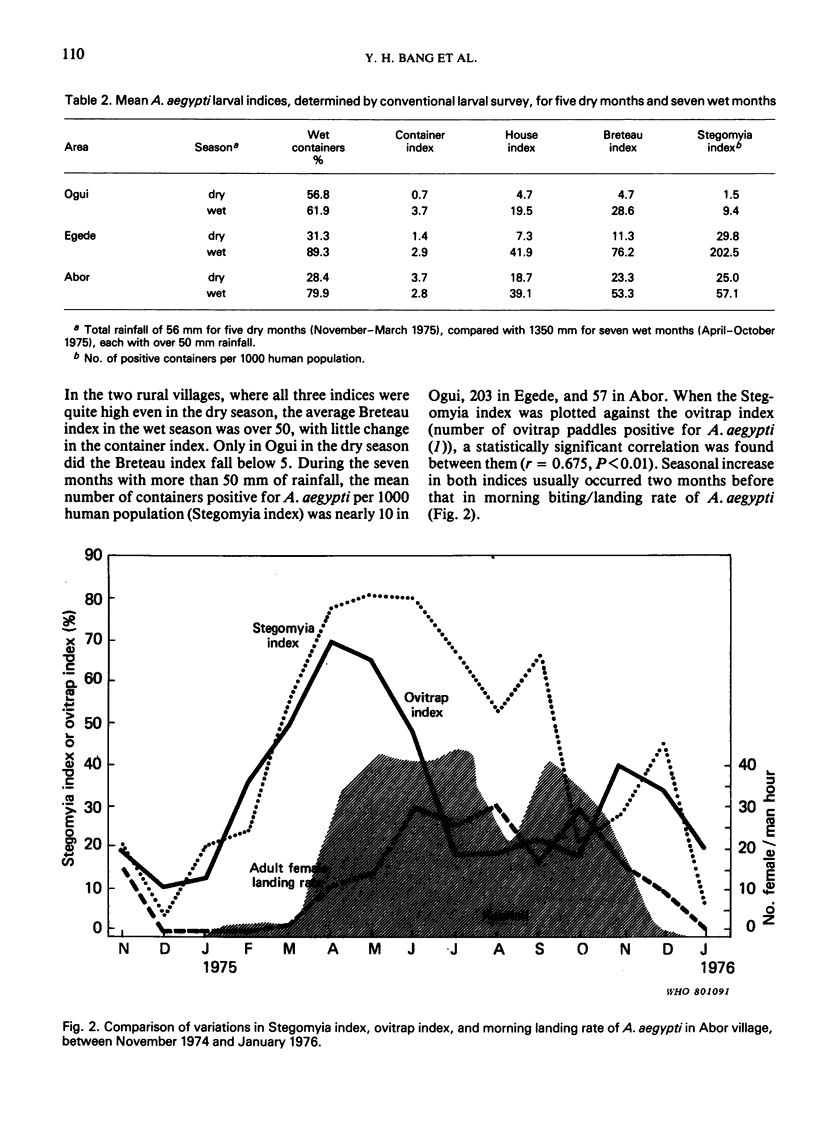
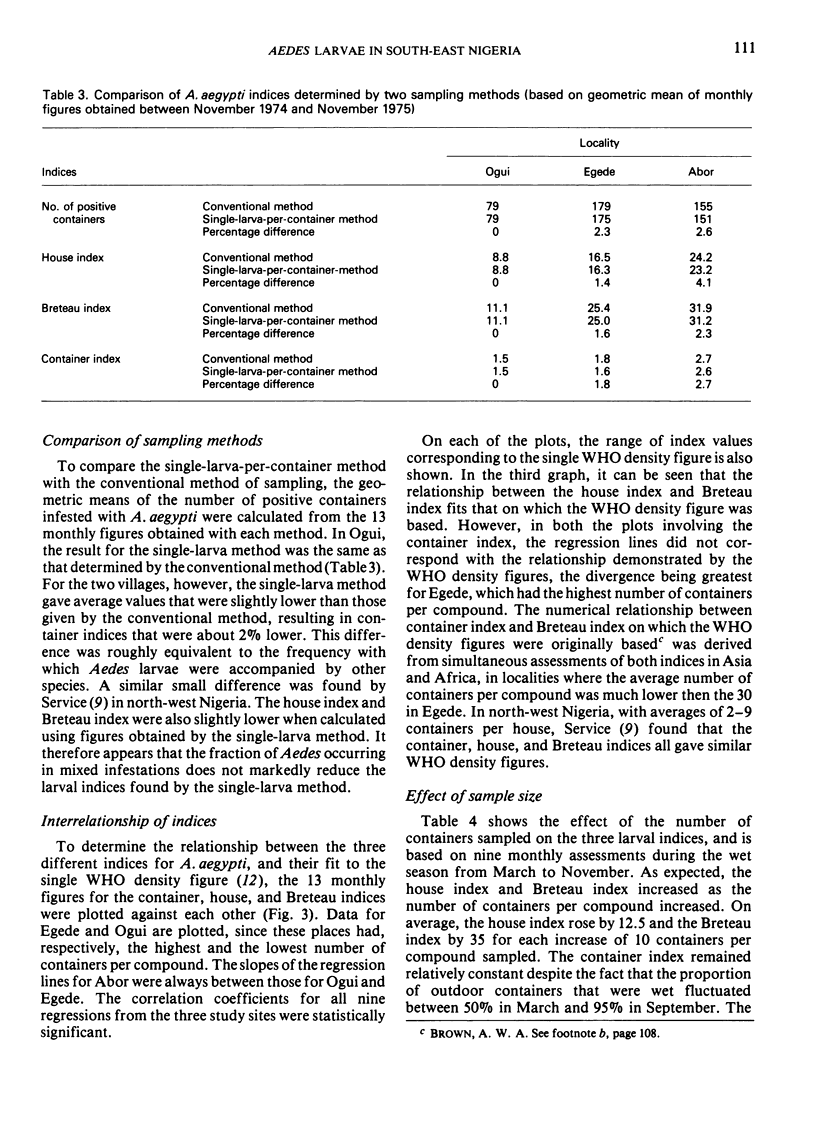
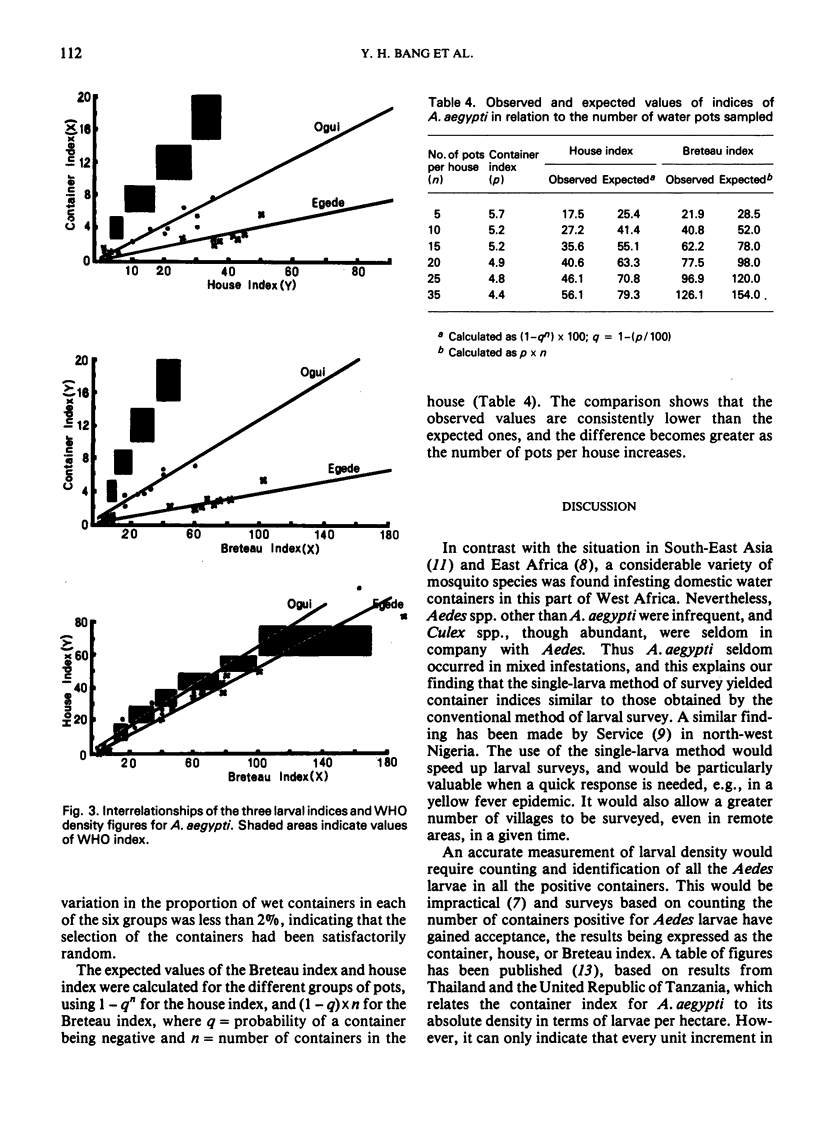
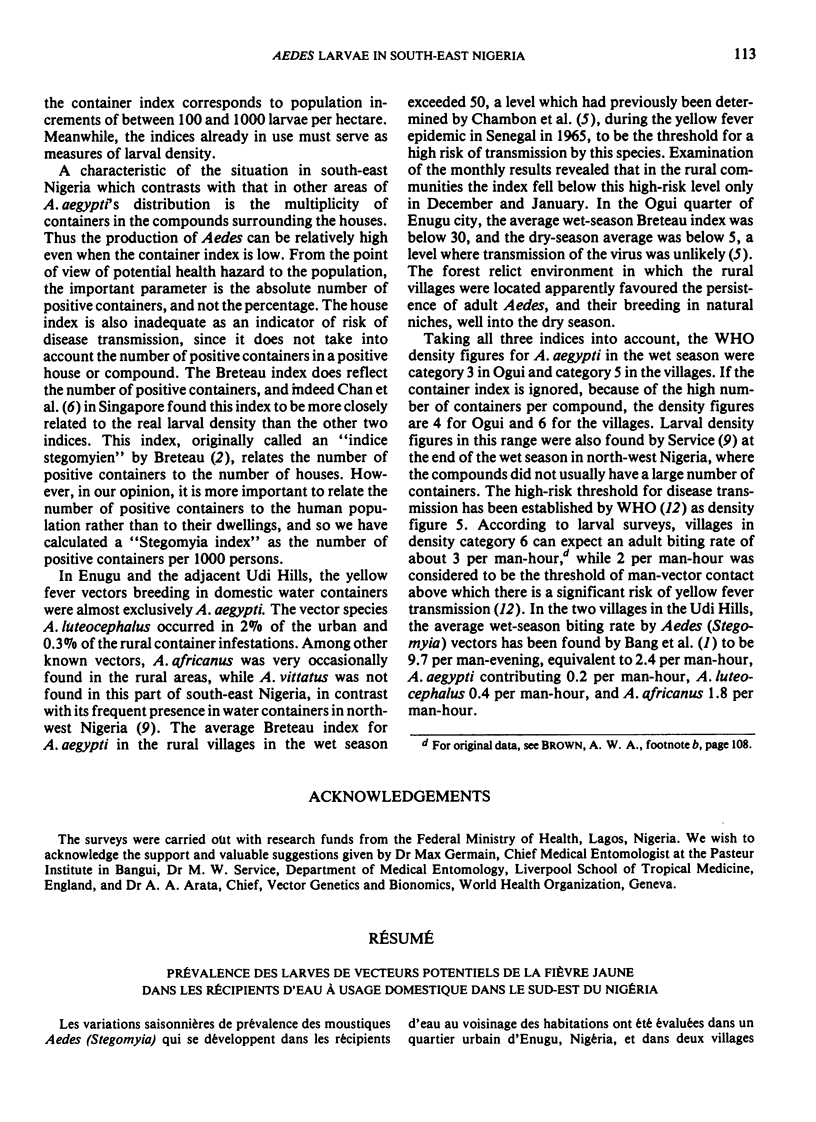
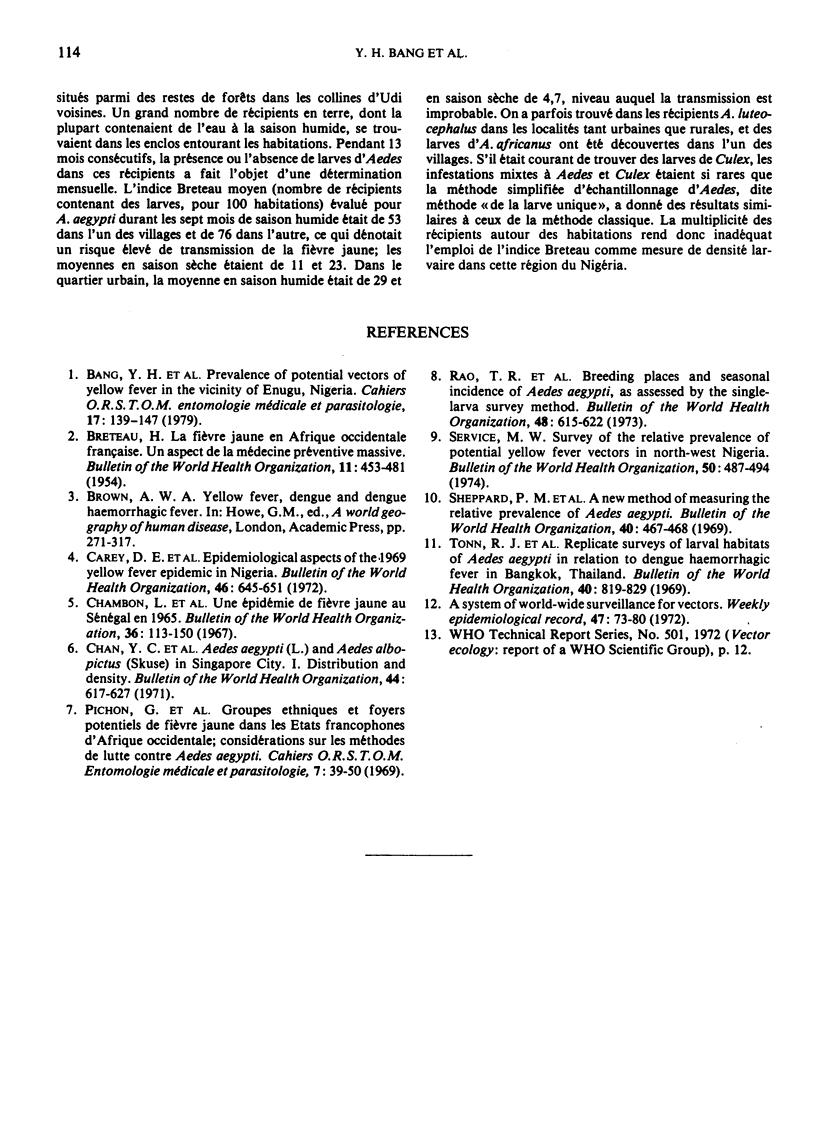
Selected References
These references are in PubMed. This may not be the complete list of references from this article.
- BRETEAU H. La fièvre jaune en Afrique-Occidentale Française; un aspect de la médecine préventive massive. Bull World Health Organ. 1954;11(3):453–481. [PMC free article] [PubMed] [Google Scholar]
- Carey D. E., Kemp G. E., Troup J. M., White H. A., Smith E. A., Addy R. F., Fom A. L., Pifer J., Jones E. M., Brès P. Epidemiological aspects of the 1969 yellow fever epidemic in Nigeria. Bull World Health Organ. 1972;46(5):645–651. [PMC free article] [PubMed] [Google Scholar]
- Chan Y. C., Chan K. L., Ho B. C. Aedes aegypti (L.) and Aedes albopictus (Skuse) in Singapore City. 1. Distribution and density. Bull World Health Organ. 1971;44(5):617–627. [PMC free article] [PubMed] [Google Scholar]
- Rao T. R., Trpis M., Gillett J. D., Teesdale C., Tonn R. J. Breeding places and seasonal incidence of Aedes aegypti, as assessed by the single-larva survey method. Bull World Health Organ. 1973 May;48(5):615–622. [PMC free article] [PubMed] [Google Scholar]
- Service M. W. Survey of the relative prevalence of potential yellow fever vectors in north-west Nigeria. Bull World Health Organ. 1974;50(6):487–494. [PMC free article] [PubMed] [Google Scholar]
- Sheppard P. M., Macdonald W. W., Tonn R. J. A new method of measuring the relative prevalence of Aedes aegypti. Bull World Health Organ. 1969;40(3):467–468. [PMC free article] [PubMed] [Google Scholar]
- Tonn R. J., Sheppard P. M., Macdonald W. W., Bang Y. H. Replicate surveys of larval habitats of Aedes aegypti in relation to Dengue haemorrhagic fever in Bangkok, Thailand. Bull World Health Organ. 1969;40(6):819–829. [PMC free article] [PubMed] [Google Scholar]


